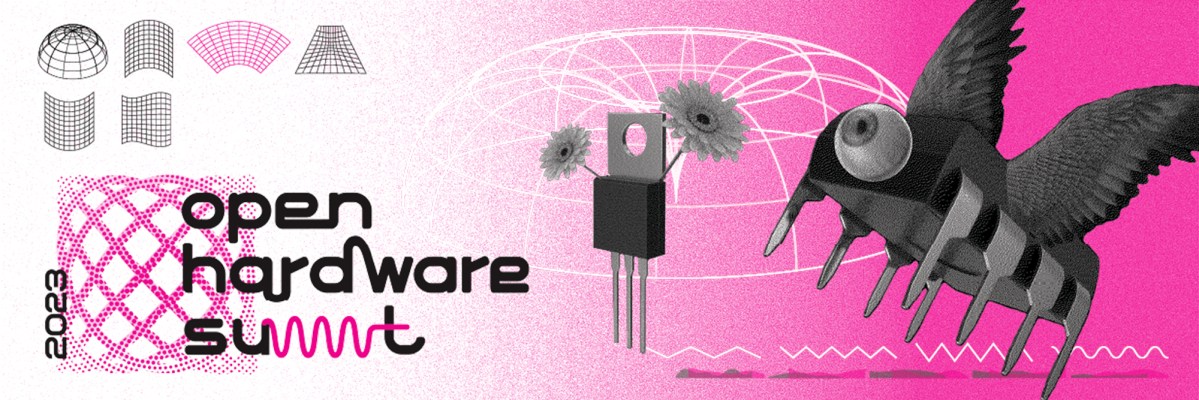
Our very own Laurel Cummings giving an amazing talk!
This past weekend was the 2023 Open Hardware Summit, put on by the Open Source Hardware Association (OSHWA). It was jam-packed with amazing talks by speakers who brought the conference to a new level! I attended virtually and just like last year the Discord server was a great way to mingle with other attendees (both physical and virtual) while being able to interact with speakers after their talks.
The Tindie Blog’s very own Laurel Cummings gave a talk on what is really needed in a technological go-bag, from a disaster relief point of view. Her presentation was funny and informative — you might want to leave the laser cutter at home, for example (unless you really need custom o-rings). Each tool got its very own, ahem, “profile” (I won’t ruin the joke) and it made the information very memorable! Laurel’s experience helping people in disaster & war zones is admirable, and her valuable experience in picking and choosing what tools really matter and how you can make a positive impact is on full display here. If you have ever considered creating a tech go-bag or mobile lab of any kind, make sure you watch her talk first!
On the first day, the opening keynote speaker was Dr. Carlotta Berry, an EE and robotics professor at the Rose-Hulman Institute in Indiana. A self-described #noireSTEMinist, Dr. Berry spoke about her FlowerBots project to create a series of easy-to-use robots specifically for education. Three designs help span all the way from primary school to post-graduate studies, with some overlap in between. The focus is on true open-source hardware principles, with educators encouraged to tweak, extend, change and re-create any parts as needed. The entire design can be put together on a budget. All parts are 3D printable, and the rest of the BOM is available off-the-shelf. With plenty of code examples to get you started, the project was immensely inspiring to hear about!

Tindie seller and documentation-perfecter Steph Piper
Another Tindie seller, Steph Piper, gave a talk on one of the most important parts of open-source hardware: documentation! Using her GlowStich LED project as an example, she highlighted the major shortcomings we often see in the documentation for both open-source and proprietary projects: walls of text with no visuals, out-of-date information, instructions that are lacking in enough detail to actually complete a project, the list goes on and on. It’s very easy to create bad documentation, which is why there’s so much of it. It doesn’t take much more effort to create wonderful documentation, but you need to have documentation in mind throughout the entire development process. Bad documentation can make your life more difficult as well: you’ll spend more time doing customer support, answering the same questions over and over, and your customers will feel frustrated. Many might not even complete the project, meaning your hard work ends up in a drawer, unused. So, while you are creating your project, make notes about important stumbling blocks you noticed along the way and incorporate those into your docs! Take quality, high-resolution photos, and review them to make sure they are useful before photographing the next step. Make sure to watch her whole talk for many more useful tips and great examples!

Becca Sharp & Rianna Trujillo of New Mexico Highlands University
The last talk I wanted to highlight here was Open Hardware for Culture & History. Rianna Trujillo & Becca Sharp of New Mexico Highlands University talked about their experiences using open-source hardware to help preserve and present the unique culture of New Mexico. They have developed a platform called the Museduino to help museums and other cultural centres create reusable and re-purposeable interactive displays and exhibits. They also have used open hardware to help preserve cultural experiences, in one case managing to get LIDAR scans of a small chapel minutes before the elders came to lock the doors and close it to the public. Now the look, feel and shape of the chapel can be experienced virtually, helping to overcome the lack of physical access. Their work shows how open hardware impacts all sorts of fields beyond the typical ones we think of in electronics.
This year, I noticed an increase in the number of academics who both attended and gave talks, which is a great sign that open-source hardware principles are making their way further into post-secondary education. There are now two open-source hardware academic journals, which I wasn’t aware of — Hardware-X and the Journal of Open Hardware. A few of the academics said they hadn’t heard of the Open Hardware Summit before but were very glad they had attended and learned a lot. This growing relationship between academics and open-source hardware designers and hackers is an indication of the growing relevance and impact that open-source hardware is having, and reflects positively on the work OSHWA has been doing! OSHWA is now a decade old, and the Summit has been going on for 13 years. With the quality and breadth of talks this weekend, it’s clear the Summit is simply getting bigger and better every year! I want to give a huge shoutout to the Summit organizers, in particular Lee Wilkins, Alicia Gibb, and Claire Cassidy! They knocked it out of the park this year and their hard work was obvious from the opening keynote to the final talk.
Credit : Source Post






